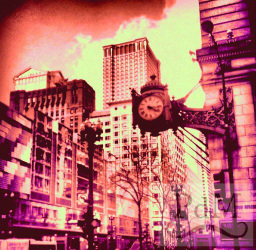
By Sara Schwartzkopf
Society Contributor
DENVER - Native America. Denver, Colorado is home to a unique type of Native American which the indigenous community acknowledges as the “City Indian.” A “City Indian” is a Native American who grew up away from their reservation, most commonly in a large city, away from other Natives, and often separated from their tribal processes.
Within the Native American community, identity is constantly up for debate. Centuries of enforcement of the United States assimilation policy, blood quantum laws and wars have taken their toll on indigenous populations – down to the point where what it means to be an “Indian” is even uncertain. In Denver, you can ask five different people who identify as Native American what makes them Native American, and you will receive five different answers. Someone will tell you it’s ancestry, another will tell you it’s connection to tradition, and yet another will tell you that it’s a matter of giving back to the community. Yet, allegations of assimilation and white-washing are still thrown at even full-blooded Native Americans who grew up outside of their reservations. Those who are mixed walk a line of whether or not they’re “too mixed” or whether their lives have strayed too far away from tradition and culture to truly count as “real Indians” anymore.
Reservations function as centers that try to maintain a sense of community and tradition. Families that have moved off the reservation in search of a better life often find themselves in a sort of culture shock. Many of the people they encounter do not understand the complexities of Native American identity. Instead it becomes the task of these new City Indians to try and educate their non-Native peers while at the same time trying to find a place for themselves in a culture that remains largely ignorant of the issues they face.
In order for you to identify yourself as a Native American legally, the United States government requires you to be enrolled with your tribe. However, each tribe is allowed to make their own laws regarding who can be a member. Some tribes simply ask that their members can prove descent – if any ancestor belonged to the tribe and you possess the birth certificates to prove that you are in fact their descendant then that is good enough. Most tribes request that you prove you are a certain amount of their tribe – you must be at least ¼ Kiowa, 1/32 Chickasaw, ½ Ute Mountain Ute, 1/8 Comanche. There’s a lot of variability amongst tribes in who is truly a member.
Even with these directives from the tribal governments, many members of the community will argue that they are meaningless. Being 100% genetically Native American doesn’t prove that you know anything about your traditions or history. Others will argue that prior to the government trying to legislate race, it would have been a simple matter of descent. If one of your parents is Native, then so are you.
Despite the discourse that has been discussed regarding Native American identity, there is still no clear definition amongst Native communities of what constitutes a “real” Native American.
Society Contributor
DENVER - Native America. Denver, Colorado is home to a unique type of Native American which the indigenous community acknowledges as the “City Indian.” A “City Indian” is a Native American who grew up away from their reservation, most commonly in a large city, away from other Natives, and often separated from their tribal processes.
Within the Native American community, identity is constantly up for debate. Centuries of enforcement of the United States assimilation policy, blood quantum laws and wars have taken their toll on indigenous populations – down to the point where what it means to be an “Indian” is even uncertain. In Denver, you can ask five different people who identify as Native American what makes them Native American, and you will receive five different answers. Someone will tell you it’s ancestry, another will tell you it’s connection to tradition, and yet another will tell you that it’s a matter of giving back to the community. Yet, allegations of assimilation and white-washing are still thrown at even full-blooded Native Americans who grew up outside of their reservations. Those who are mixed walk a line of whether or not they’re “too mixed” or whether their lives have strayed too far away from tradition and culture to truly count as “real Indians” anymore.
Reservations function as centers that try to maintain a sense of community and tradition. Families that have moved off the reservation in search of a better life often find themselves in a sort of culture shock. Many of the people they encounter do not understand the complexities of Native American identity. Instead it becomes the task of these new City Indians to try and educate their non-Native peers while at the same time trying to find a place for themselves in a culture that remains largely ignorant of the issues they face.
In order for you to identify yourself as a Native American legally, the United States government requires you to be enrolled with your tribe. However, each tribe is allowed to make their own laws regarding who can be a member. Some tribes simply ask that their members can prove descent – if any ancestor belonged to the tribe and you possess the birth certificates to prove that you are in fact their descendant then that is good enough. Most tribes request that you prove you are a certain amount of their tribe – you must be at least ¼ Kiowa, 1/32 Chickasaw, ½ Ute Mountain Ute, 1/8 Comanche. There’s a lot of variability amongst tribes in who is truly a member.
Even with these directives from the tribal governments, many members of the community will argue that they are meaningless. Being 100% genetically Native American doesn’t prove that you know anything about your traditions or history. Others will argue that prior to the government trying to legislate race, it would have been a simple matter of descent. If one of your parents is Native, then so are you.
Despite the discourse that has been discussed regarding Native American identity, there is still no clear definition amongst Native communities of what constitutes a “real” Native American.


 RSS Feed
RSS Feed





